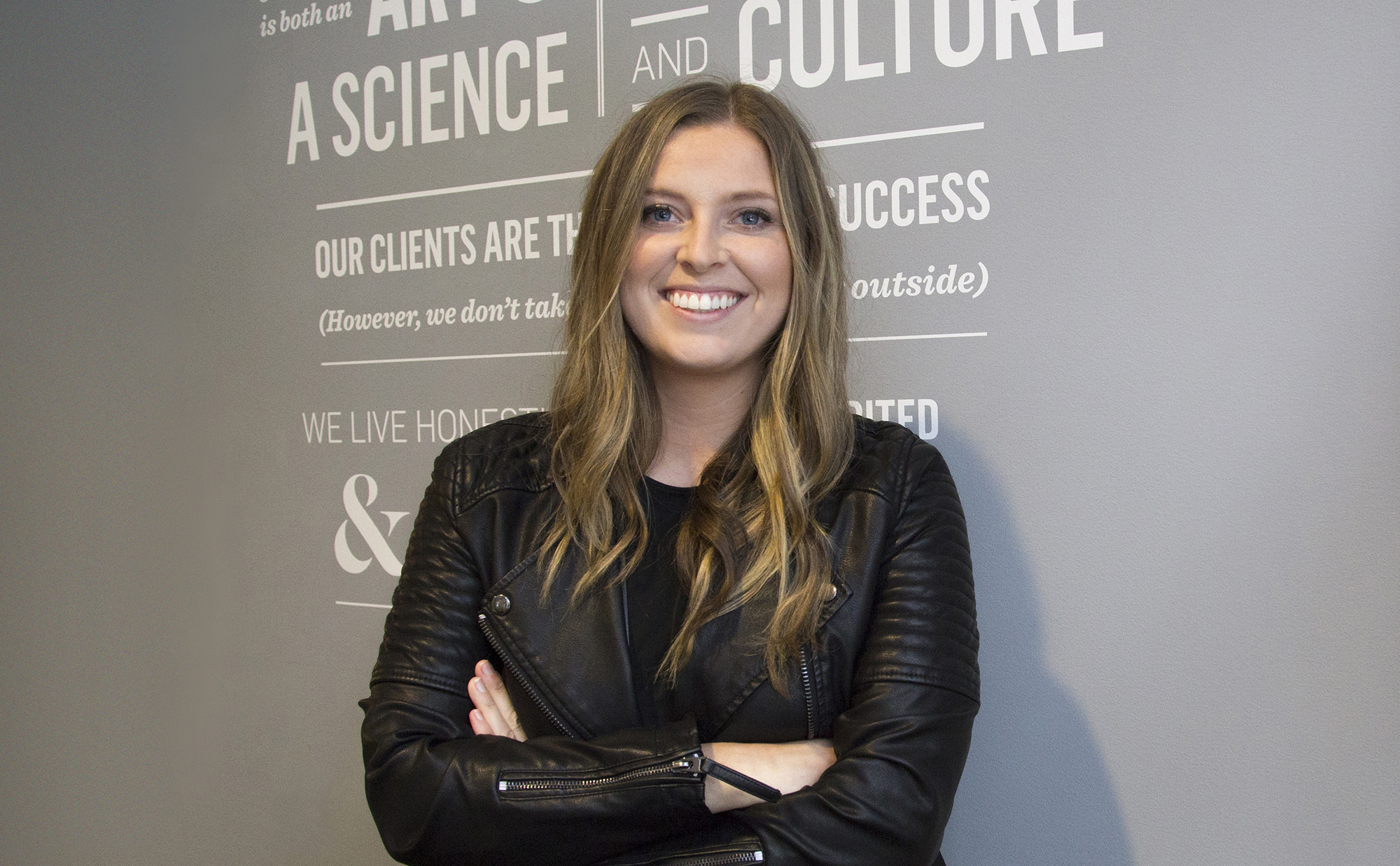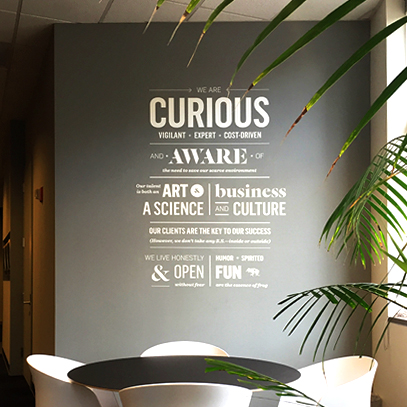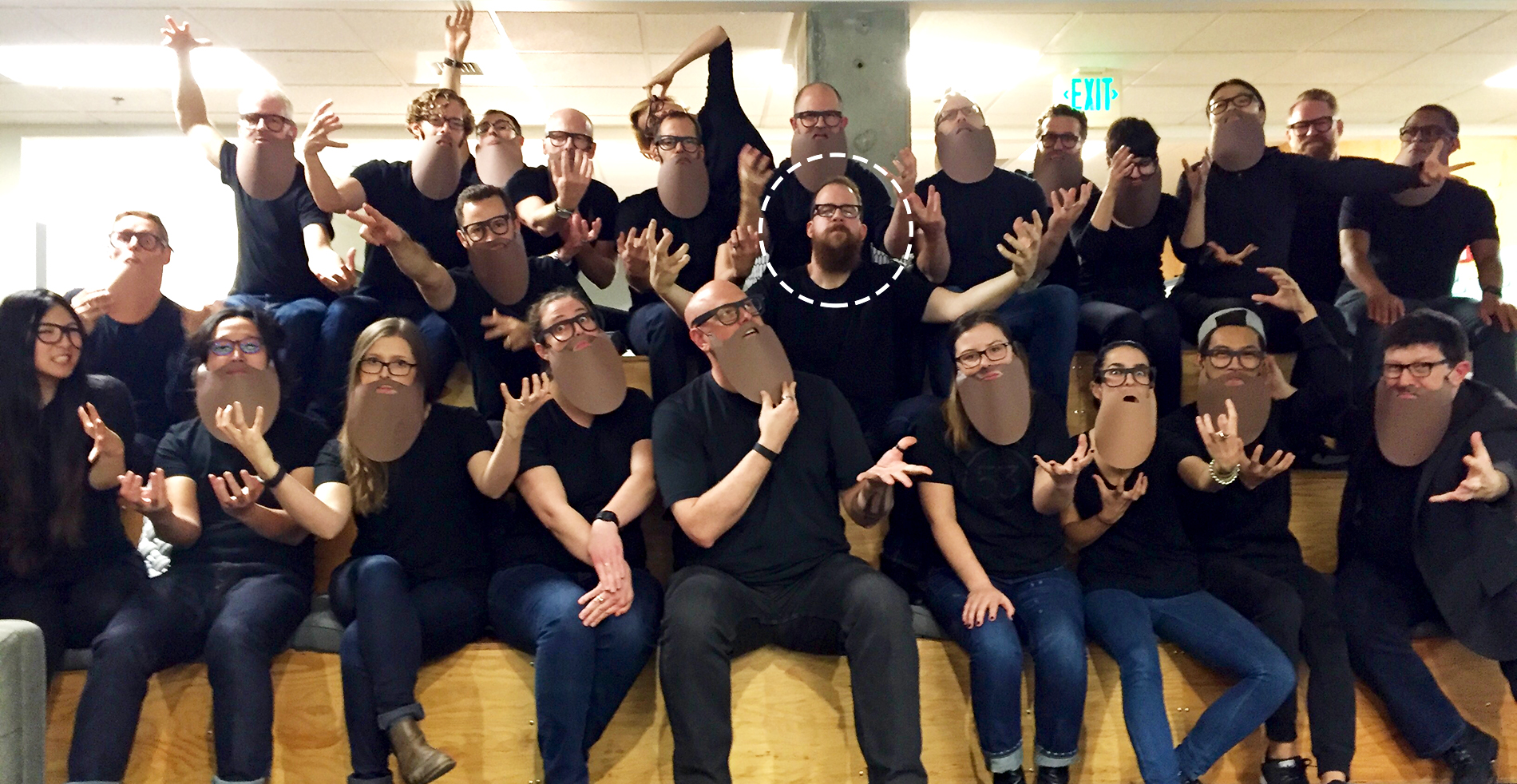Sophie Milton is currently a Senior Visual Designer at frog in Seattle and a 2011 undergraduate alum of the UW Visual Communication Design Program. frog is a global design and strategy firm. frog transforms businesses at scale by creating systems of brand, product and service that deliver a distinctly better experience. They strive to touch hearts and move markets. Their passion is to transform ideas into realities. frog partners with clients to anticipate the future, evolve organizations and advance the human experience.
Always Expect the Unexpected
Frog
Sophie Milton
Apr 10 2015

Part One
Choosing What
Scares You the Most

How did you get your job at frog?
I actually didn’t know that frog’s Seattle studio existed until my senior year at UW. Minnie Bredouw (B. Design 2010, UW Visual Communication Design) came into our professional practice class with two other frogs. The first half of the class was a traditional panel discussion: Q&A. In the second half, they did a “speed portfolio review”—each student had about ten minutes to show their work. I remember trying to talk as quickly as possible so that I could show a breadth of work. I didn’t think anything would come of that short interaction, but afterwards a frog recruiter contacted me and a few other students to interview for summer internships. I had previously been interviewing at more traditional agencies—the usual suspects for UW grads of the time.

Why did you ultimately choose frog?
I ultimately chose frog because it scared me the most. I didn’t have much knowledge around UI design, or even the human-centered design process. At that time, it wasn’t something that was typically taught in design school, so I was in the dark. I’m really glad that I made the leap, though; as a result, I think I’ve learned a lot more than I may have elsewhere. One of the key benefits of being a frog is the variety and diversity of work we get. I’m constantly learning—we get projects in different industry verticals, so we immerse in it, and take that knowledge into the design. We are exposed to a disparate problem set because frog is a consulting firm.
Part Two
Becoming Comfortable with
Unpredictable Situations
Some of our designers say, “You’re designing for a 4,000 pound murder machine.”
What projects have you enjoyed working on at frog?
My favorite projects have both been automotive HMIs (Human Machine Interfaces), which really surprised me. When I started on the first one, I had absolutely no idea how to design for a car. It’s so different than designing an app or website—the “classic” UI problems. Some of our designers like to say, “We’re designing for a 4,000 pound murder machine.” That is, you’re designing an experience that people are going to use in a car, and that could be fatal if done poorly. It’s a super interesting problem—higher stakes means higher complexity. Driver distraction completely changes how you approach the design. For example, type has to be “glance-able”—it has to be set in a specific angular size that is legible from the driver’s position.
Both of the automotive projects I have worked on will be shipped into the market. I struggled with the counter—high-level design as opposed to deep, detailed design—when I first started at frog. Sometimes we design things that are conceptually provocative, instead of the full system that would be built and deployed, which often means designing the foundation for something that the client team will then carry out. We actually do a lot less of that kind of work now, though—we do more big system delivery projects.
Do these automotive projects include industrial design?
On the last automotive project I was on, we designed the instrument cluster for a car, which inherently requires Industrial Design. The client’s internal team was responsible for this portion of the work, so we implied textures and materials in the visual design files. Suggestive, but by no means fully fleshed out ID. frog has a strong Industrial Design history, reflected in the discipline’s presence in our San Francisco, New York, and Milan studios—and I believe Munich as well. In our studio, because we are smaller, we don’t currently have an Industrial Design presence. When a project requires those skills, we can utilize people from other studios. For my first automotive project, we pulled someone from the San Francisco office, who co-located with the Seattle team.
What’s a typical day at frog like for you?
They’re all so different! Maybe the mantra of a typical day is actually “Expect the unexpected!” It’s pretty funny how you can never plan your day here—we work in a constant state of reframe, and everything moves at a fast pace. You just have to adapt to that. I think frog has made me comfortable with chaos—I’ve become a much calmer person than I used to be. I’ve become accustomed to all kinds of unpredictable situations.
frog has made me comfortable with chaos.
Do you work in teams?
Yes. Every project team is made up of a mixture of disciplines—usually, IxD, Visual Design, Design Technology, and Program Management, with oversight from the Creative Directors. It’s very multidisciplinary. I love being in a room with different disciplines and perspectives, attacking design problems together. We all get to participate in the thinking and the making. I’m not just given wireframes and asked to make them look good—I’m figuring out the problem with the Interaction Designer and the Design Technologist, as well as executing on traditional Visual Design tasks. Meanwhile, Design Technologists prototype as we progress in the design, which allows us to test the product first-hand. There’s a really nice cycle of iteration that happens in this way. It’s one of the things I like the most about working at frog.
Part Three
What Makes a Person
a “frog Cultural Fit”
How would you describe the people at frog?
It’s really hard to describe what makes a person a “frog fit.” We’re a fairly diverse group—in discipline, age, personality, background, etc.—which amounts to a diverse pool of knowledge. If there’s anything you want to learn about, there’s almost always an expert that can help. If not locally, there will be somebody in New York, San Francisco, or any of the other global frog offices. I think the common thread that binds us is an intellectual curiosity—the ability to think critically, instead of designing without conscious decision-making or grounding. I love how rigorous frogs are—it pushes you to challenge yourself and grow at a rapid rate. It’s amazing, the caliber of people that work here.
What are some of the cool things that happen at frog?
Oh gosh. Well, there’s “Coffee Time” everyday at 4pm, which functions as a short break (with snacks!) for the studio to come together and socialize on a daily basis. We also have craft building sessions about once a month, which we call “Creative Forum.” These allow the different disciplines to come together to learn from one other. We discuss topics like emerging technology, patterns, 3D printing, VR/AR, and so on. It is an opportunity for frogs to communicate what they care about and develop competencies. Similarly, we have “Third Thursdays,” where we bring in creatives from other industries. We’ve had Trimpin come in—a sound artist who utilizes glass blowing in his work. We’ve also had Langdon Cook, the author of Fat of the Land. Langdon is a professional forager who cooks beautiful meals from his harvests, and hosts these crazy, elaborate dinner parties. We select people who can keep us inspired—who keep us looking at creativity from different angles. On a broader scale, I really enjoy traveling for projects—I think that’s one of the coolest perks here. There are constant opportunities to do so, for projects, or for longer-term co-location in other studios.
Coffee Time Everyday at 4pm
"Coffee Time is awesome because it gets everybody socializing on a daily basis, and gives you a little break."

Part Four
It’s a Great Time to Take a Risk

What advice do you have for current UW design students?
Use your time wisely! Honestly, I think I should have focused on gaining speed and proficiency with design software when I was in school. Man, I was so slow. I think if I went back, I would have eight hours of sleep a night because I’m so much faster now. I should have practiced the programs religiously—learning every shortcut. Of course I think it’s more important to teach the skills over the tools—that’s obviously what UW does as an approach—but it’s good to have a firm handle on the tools you use everyday, so you can execute quickly and effectively. In the same vein, I wish I had implemented a better process to plan and design my portfolio. I was really pressed for time during my senior year, and didn’t think enough about “What do I want to show” and “How do I want to show it?” Instead, I just kind of scrambled my work together. It would have been far better to keep designing and updating my portfolio, and building a strong narrative around what kind of designer I was and wanted to be.
It would also be great for students to learn more about the business and operational side of design, if they can. The UW Design program definitely made me a good detailed, Visual Designer—the program has a well-deserved reputation for quality and level of detail—really solid foundational skills. But at frog, it’s critical for everyone to be able to interact with a client face-to-face, and speak to problems from on a more strategic level. We tend to rely on the whole team regardless of discipline or seniority to present their work, interact in workshops, etc.
On a broader level, I would also encourage students to take more risks. I think a lot of people graduate and think, “Okay, I’m going to work at the place that’s going to pay me the most.” There are lots of big corporations now that actively recruit design students, and they can offer substantial salaries. It’s easy to be tempted by those “golden handcuffs”—and of course students might have loans to repay, or have other financial worries. But, it’s also important to think about what kind of work you want to do, or how you want to continue to develop as a designer. In some ways the job you take is really just an extension of school. Where are you going to learn the most? Where are you going to grow the most? So, it’s actually a great time to take a risk.
